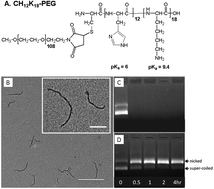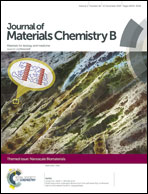Highly compacted pH-responsive DNA nanoparticles mediate transgene silencing in experimental glioma
Abstract
Complex genetic mutations are common in brain cancer, making gene therapy an attractive approach to repair or modulate altered genes and cellular pathways. Non-viral gene vectors can offer DNA delivery without the risk of immunogenicity and/or insertional mutagenesis that are common with viral vectors. We developed pH-responsive DNA nanoparticles, CH12K18PEG5k, by inserting a poly-L-histidine segment between PEG and poly-L-lysine to engineer a triblock copolymer. CH12K18PEG5k DNA nanoparticles trafficked through clathrin-dependent endocytosis (CME) as the primary pathway in mouse glioblastoma (GBM) cells, and protected plasmid DNA from both DNase-mediated and acidic lysosomal degradation. CH12K18PEG5k DNA nanoparticles effectively silenced a tumor-specific transgene (firefly luciferase) following direct injection into mouse intracranial GBM. Toxicity and histological analysis showed no evidence of acute or delayed inflammatory responses. These results demonstrate the utility of using this DNA nanoparticle-based technology for delivering genes to tumor cells as a possible therapeutic approach for patients with brain cancer.

- This article is part of the themed collection: Nanoscale Biomaterials

 Please wait while we load your content...
Please wait while we load your content...